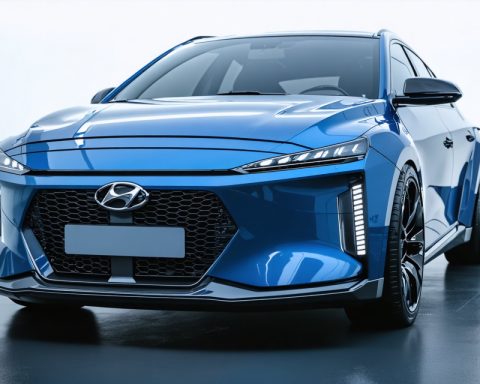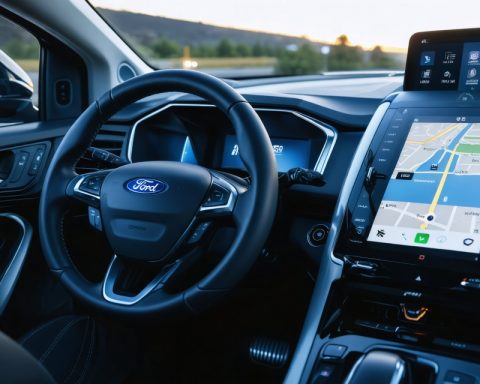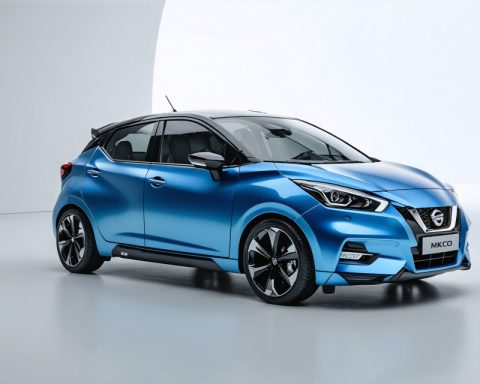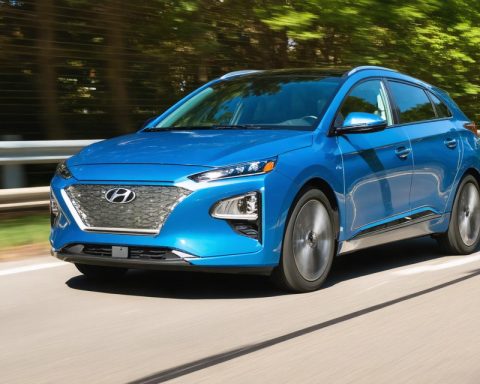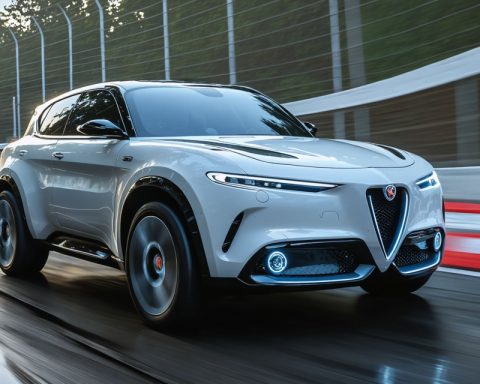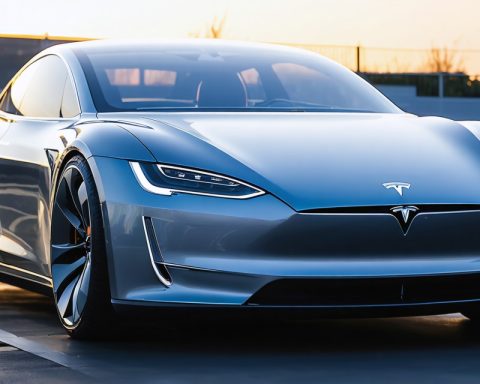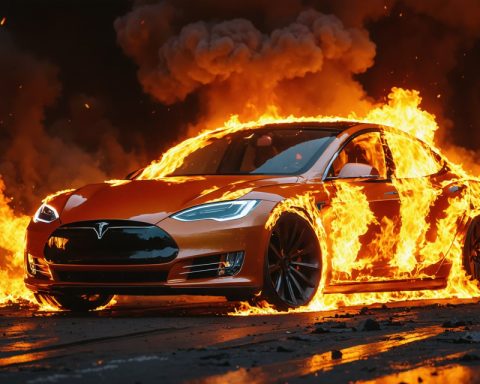- Unsold Teslas in Australia highlight a decline in demand, especially for the Model Y, amid increased competition and changing consumer preferences.
- Tesla employs aggressive discounting to reduce inventory of older models, but this strategy risks eroding consumer trust due to rapid depreciation.
- Australia’s shift towards hybrid vehicles underscores concerns over electric vehicle infrastructure and challenges Tesla’s market dominance.
- Elon Musk’s political engagements impact Tesla’s image, influencing brand perception among Australian consumers.
- The evolving automotive landscape in Australia, combined with competitive pricing from other brands, poses significant challenges for Tesla.
- Tesla’s future success in Australia hinges on improving customer trust, optimizing pricing strategies, and enhancing charging infrastructure.
A sea of unsold Teslas gleams under the Australian sun at a Perth holding yard, a symbol of the electric car giant’s current entanglements. This remarkable spectacle illustrates not only the rise and fall in demand for Tesla’s Model Y but serves as a window into the shifting automotive landscape down under.
Hundreds of gleaming cars stand at attention, a vivid tableau of Tesla’s challenge as the company grapples with heightened competition and shifting consumer sentiments. Australia, once fertile ground for Tesla’s flourishing sales, appears to have cooled, leaving an abundance of yesterday’s models parked in anticipation of buyers who seem content to linger.
Elon Musk’s titan of the electric vehicle realm faces a multifaceted challenge. As new iterations of the Model Y fast approach, the company swiftly discounts older models in a bid to clear inventory. Yet, such strategies, while effective in moving stock, may inadvertently erode consumer trust. Buyers who paid top dollar for their vehicles now watch in dismay as prices plummet, leading to a crescendo of depreciation far steeper than anticipated.
But why the hesitance? Australia’s embrace of electric vehicles appears tentative, partially driven by burgeoning competition from more budget-friendly options. The rise of other brands offering similar technological marvels at a fraction of the price has diluted Tesla’s supremacy. At the same time, the consumer’s calculus incorporates another factor—Elon Musk’s new political ventures in the U.S., which have left a sour taste for some, dimming the brand’s allure.
In a landscape where the founder’s political moves make global headlines, Australians weigh their allegiance to a brand entwined with Musk’s controversial persona. Therein lies the rub; the charisma that once propelled Elon Musk to the forefront of innovation now casts shadows on Tesla’s core markets.
Maric, an industry insider, captures this sentiment succinctly. He observes that the Australian car market, once electric in its enthusiasm, shows signs of pivoting back to hybrids. The current state of petrol-electric hybrid vehicles offers significant allure with their extended range and convenience, overshadowing the promise of all-electric journeys hampered by inadequate charging infrastructure. The image of Teslas queued at charging stations during holiday rushes remains seared in memory.
The broader picture suggests Tesla’s enviable position is undermined not by a single challenge but by the confluence of stagnant infrastructure, unpredictable pricing strategies, and the weight of a founder’s political ambitions. All eyes will now be on how Tesla navigates these choppy waters, possibly by cementing dealer relationships and enhancing customer satisfaction, or risk seeing its pioneering gleam dimmed in the Land Down Under.
As Tesla faces these crossroads, the buyer’s caution reflects a broader takeaway: Trust, once tarnished, requires time and authenticity to restore. In the end, it’s a reminder that in the race towards innovation, customer loyalty remains the fastest car off the line.
Tesla’s Inventory Glut in Australia: Future Prospects and Current Challenges
Understanding Tesla’s Dilemma in Australia
The growing field of unsold Tesla vehicles in Perth is a testament to the company’s struggles in adapting to the shifting automotive landscape in Australia. Once the dominant player in the electric vehicle (EV) market, Tesla now faces decreased demand for its Model Y against rising competition and changing consumer sentiments.
Why is Tesla Facing a Decline?
1. Increased Competition: Emerging brands are offering EVs with competitive technology at lower price points. Companies like BYD and Hyundai have released models that challenge Tesla’s price-performance ratio, reducing Tesla’s market share and appeal.
2. Founder’s Influence: Elon Musk’s political ventures and public persona have impacted Tesla’s brand image, particularly for international markets like Australia. While Musk’s innovative drive previously attracted a global following, recent political actions may have left some consumers wary of the brand association.
3. Demand for Hybrids: Australian consumers appear to be gravitating towards hybrids due to their extended range and the convenience of petrol backup, especially in regions with limited EV charging infrastructure.
Market Trends and Forecasts
– Hybrid Vehicles’ Rise: According to industry experts, the demand for hybrid vehicles will continue to grow. Car manufacturers that incorporate innovative hybrid technology can expect increased market share in Australia over the next few years.
– Electric Charging Infrastructure: The inadequate spread of charging facilities in Australia remains a significant hurdle. The expansion of this infrastructure is crucial for sustained EV adoption.
Pros and Cons of Tesla’s Strategy
Pros:
– Price Adjustments: Discounting older models can effectively clear inventory, potentially making space for newer models.
– Tech Advancements: Continued advancements in Tesla’s technology and battery management can reinforce its market leadership on technical grounds.
Cons:
– Consumer Trust: Frequent price changes can undermine buyer confidence in resale value and brand stability.
– Brand Perception: Negative publicity surrounding Tesla’s founder can contribute to potential brand damage and hesitancy.
How-To Steps: Restoring Consumer Trust
1. Transparent Pricing: Implement clear and consistent pricing strategies to avoid alienating customers.
2. Invest in Local Infrastructure: Partner with local governments to hasten the development of EV infrastructure.
3. Enhance After-Sales Service: Strengthening dealership relationships and offering exceptional customer service can improve buyer experience and loyalty.
Sustainable Steps Forward
For Tesla to regain its dominant position, it must not only address immediate inventory concerns but also consider long-term sustainability practices. This might include developing local partnerships, enhancing EV economies of scale, and focusing on sustainable production methods.
Conclusion: Actionable Recommendations
– Consider Alternative Brands: For those interested in EVs, exploring hybrid models or competitive brands might offer better value until the infrastructure improves.
– Stay Informed on Market Trends: Keeping an eye on policy changes regarding EV infrastructure will help potential buyers make informed decisions.
– Evaluate Brand Perceptions: Understand the impact of broader social and political contexts on your purchase decisions, including the implications of brand leadership on company reputation.
For comprehensive insights and updates in the automotive world, visit Tesla or read industry analyses at leading automotive news sites.


